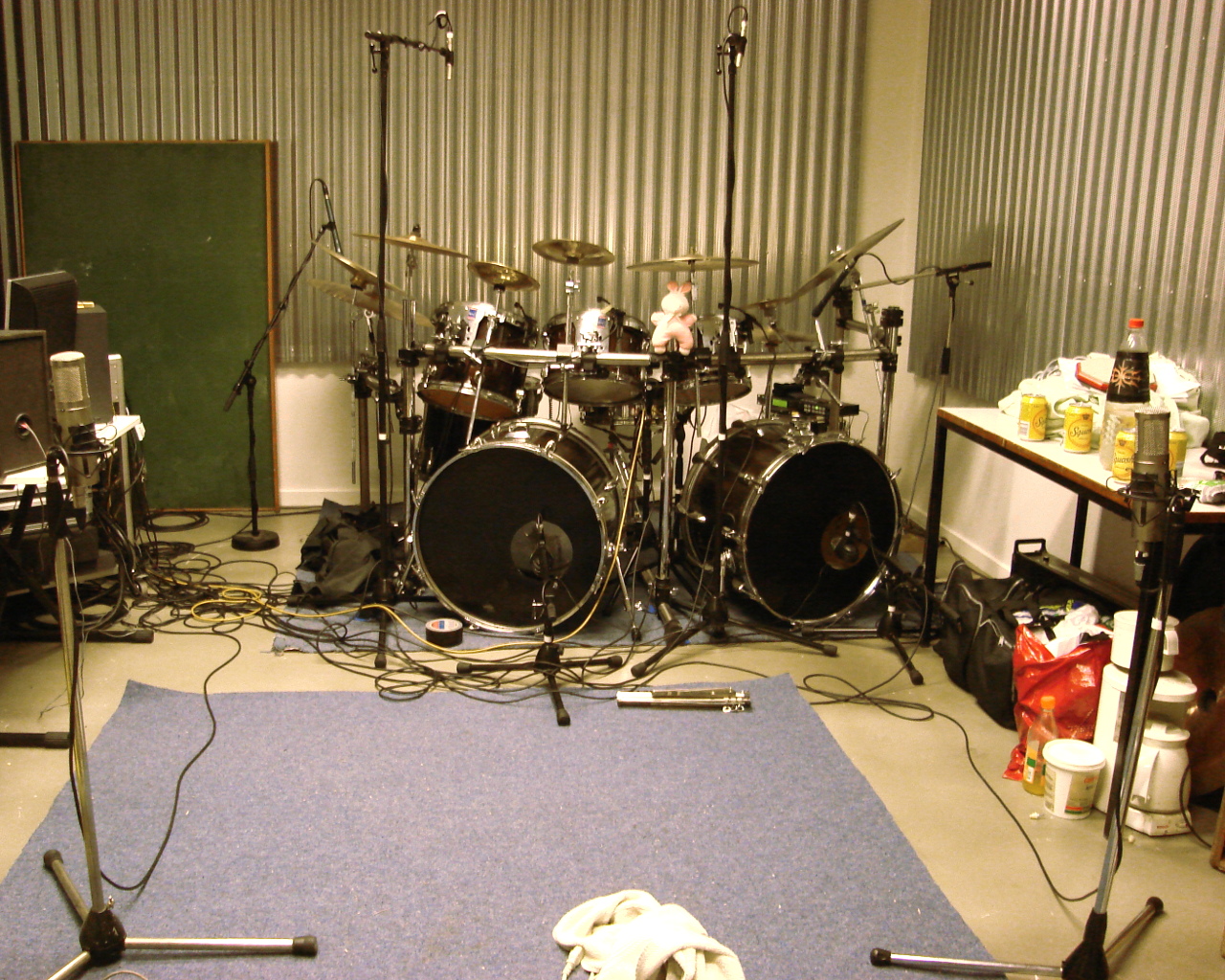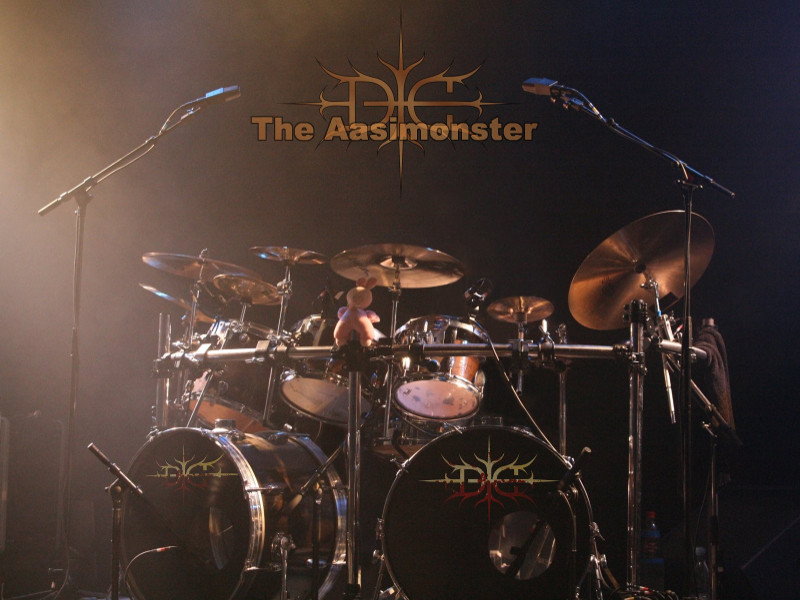Table of Contents
The Aasimonster
The Aasimonster is a large deathmetal drumkit used to track the “Rise of the Rotten” record by the Danish deathmetal band DIE http://www.executionroom.com. Converted to 2.0 format by user Chaot4. (Thanks man!)
It contains the following components:
- 2 kickdrums
- 3 hanging toms
- 1 floor tom
- 2 16“ crash cymbals
- 1 18” china cymbal
- 2 small china cymbals (Stagg 8“ and 10”)
- 1 Zilbel
- 1 Ride cymbal.
License
The Aasimonster drumkit source files are released under the Creative Commons Attribution 4.0 International License.
When the samples are used in a composition, any context in which other credits (e.g. to performers) are presented must include an attribution.
Download
- Version 2.1: Download the kit here (Note: 2.3 GB, compatible with DrumGizmo 0.9.5 and newer)
- md5: 910aa5a789d34f85c2e7c4a5c5a6b2f9
- Version 2.0 to 2.1 patch: Download the patch here (Note: This file only contains files changed from 2.0 to 2.1. Download this if you already have aasimonster 2.0 installed and don't wish to re-download the entire thing)
Additional downloads
- Ardour template: Download here
- Reaper template by torgeir: on github.
Recording setup

This drumkit was recorded using 14 microphones a trigger and the output from a trigger module:
- Snare drum was close-mic recorded using two Shure SM57 micrphones. One at the top of the snare and one at the bottom. Furthermore the analog output of a DDrum trigger was recorded.
- Each of the four toms were close-mic recorded using AKG C518M swaneneck microphones.
- The kickdrums were recorded using AKG D112 microhpones mounted in the hole. Furthermore the output of a Alesis DM5 drummodule were stored set up with the “Speed Metal” sample. The trigger module were activated using the Axis E-Kit trigger system.
- The hihat and ride cymbal were close-mic recorded using cardioid condenser microphones.
- The crash cymbals were recorded using RØDE NT5 over head microphones.
- The ambiance of the entire kit were recorded using cardioid condenser microphones.
Each of the microphones are mapped to an output channel when the plugin is assigned to the midi track. The tracks are as follows:
- Overhead left (RØDE-NT5)
- Overhead right (RØDE-NT5)
- Snare top (Shure SM57)
- Snare bottom (Shure SM57)
- Snare trigger (DDrum)
- Alesis DM5
- Kick right (AKG D112)
- Kick left (AKG D112)
- Hihat (Cardioid condenser)
- Ride cymbal (Cardioid condenser)
- Tom 1 (AKG C518M)
- Tom 2 (AKG C518M)
- Tom 3 (AKG C518M)
- Tom 4 / floor tom (AKG C518M)
- Ambience left (Cardioid condenser)
- Ambience right (Cardioid condenser)
Notes
There are minor timing issues between the ambience/overhead channels and the kick channels. It is heard as double-hits but shouldn't pose a problem as long as you do a significant low-cut on the ambience and overhead mics. It is caused by timing issues between the audio interfaces used to record the kit.
